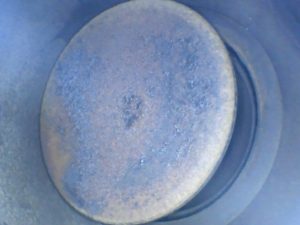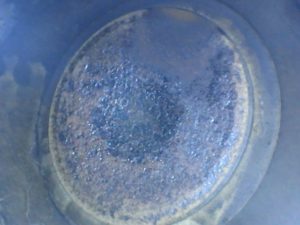Podcast: Play in new window | Download
How do you Lap an exhaust valve on an airplane engine? That’s a good question, and this is the topic in today’s episode.
If you’ve owned an airplane for very long, there’s a good chance you’ve had a “low compression” at some point during one of your annual inspections. What is perhaps not so common, is one solution for dealing with that low compression.
In the past, when a cylinder showed less than 60/80, it was automatically deemed “unairworthy” and removed for repair. But with today’s technology, this is totally unnecessary in many cases. If a borescope inspection shows a healthy exhaust valve, with no other issues noted in the cylinder, then there might be other options for dealing with that cylinder.
And “lapping” is one of those options. “Lapping” is the process of putting some grinding compound between the edge of the valve and the valve seat, and spinning the valve, in order to restore a good fit between the valve and the valve seat. Combustion deposits and irregular wear are contributors to a poor fit between the valve and its seat. If we can safely restore the contact area between the exhaust valve and the seat, it’s possible that cylinder can continue in service for many more hours. The good thing is that this process can be performed without removing the cylinder from the engine. And when it’s successful, it has the potential to save time, money, and the risk of further issues that can be a by-product of removing and reinstalling a cylinder.
Listen to today’s episode for a description of two exhaust valves that were lapped with what appears to be significant success. Time will tell, but so far, I’m hopeful about extending the life of these two cylinders.
Here is cylinder #1. Note the slight burning spot at the lower left. The compression test on this cylinder was 45/80, with significant leakage past the exhaust valve. After lapping, the compression was 63/80 even when it was cold, a remarkable improvement… and, there was almost no leakage past the exhaust valve.
The following is cylinder #2. It had a compression of 69/80, with significant leakage past the exhaust valve. After lapping, this one was 74/80 cold, another remarkable improvement, also with almost no leakage past the exhaust valve.
This is the #2 valve seat before lapping… the skinny black line, is the good area of valve seating, not sufficient for a good seal and good heat transfer. After lapping, the seating area was remarkably better.
The bottom line to remember in this episode is:
If you have a cylinder with low compression, you have options!
When your A&P contacts you and says, “You have a cylinder that’s 57/80 and we need to remove it for repair,” here are some questions you can ask:
-
- Is it leaking out the exhaust valve, and how bad is the leak?
-
- Have you looked at it with a borescope? (This should be a requirement of yours.)
- Are there any other options besides removing the cylinder?
Your A&P should be able to answer and discuss these questions without getting defensive. If not, it might be time for a second opinion.
The most important goal in all this, is safety, and I’m absolutely in favor of removing engine cylinders when necessary, but it’s also true that many cylinders have been removed unnecessarily.
Also, I’m not telling you to “lap” your exhaust valves. I’m just hoping to add some worthwhile information to the conversation, so you can make an informed decision whenever you face an issue with an exhaust valve. Do your research. Learn all you can. Then make your decision.
Contacts and resources mentioned in this episode:
Dave Pasquale of Pasquale Aviation and Savvy Aviation. Dave has written great articles and produced some very helpful videos about exhaust valves and their inspection and maintenance. Here is just one of Dave’s videos:
Video: https://www.flickr.com/photos/136005688@N02/38098941925/
Mike Busch, founder of Savvy Aviation. As always, Mike’s articles, resources and services are incredibly helpful and educational. https://www.savvyaviation.com/
American Bonanza Society (ABS.)
AOPA: Anatomy of a valve failure, by Adrian Eichhorn.
https://www.aopa.org/training-and-safety/air-safety-institute/valve-safety
(You can also download the chart with pictures to help identify healthy and unhealthy exhaust valves.
An article written for automotive applications, but educational for airplane applications as well:
Valves and valve seats – There’s more than meets the eye.
https://www.enginebuildermag.com/2017/03/valves-seats-theres-meets-eye/
An article that very compellingly describes the difference between “grinding” exhaust valve seats, and “cutting” exhaust valve seats.
http://inlandaviationspecialties.com/2017/09/17/dont-call-power-section-nothing/
Another article from Back Country Pilot, that talks about exhaust valves, including “lapping.”
https://backcountrypilot.org/forum/leaking-exhaust-valve-what-are-my-options-15921
Ok, that’s all for today. And if you’re interested, you can check out the video I posted on Instagram, of the Lockheed Electra doing taxi testing yesterday at KSHD. Definitely the coolest thing I saw at the airport this week! (My username at Instagram is airplanedean.)





Leave a Reply
You must be logged in to post a comment.